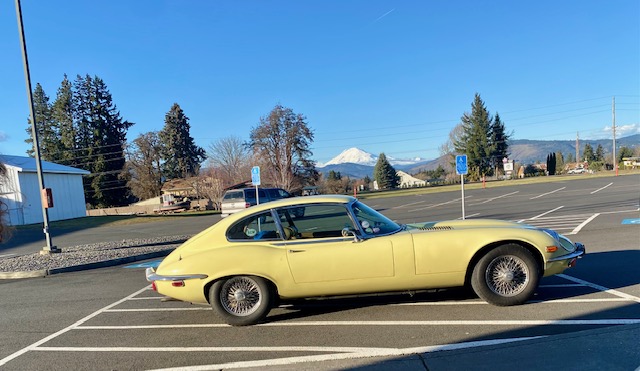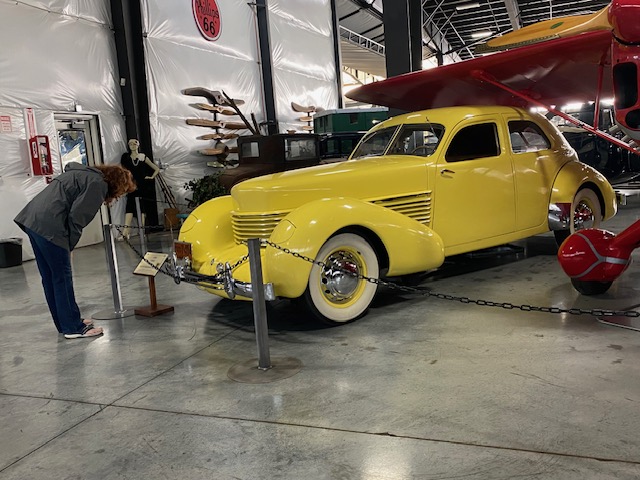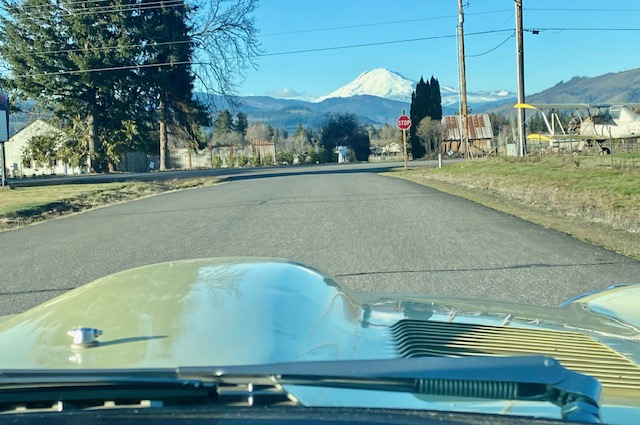
Our winter has been cold and wet, even by Oregon standards, including some snow last month. With some sunny days in the forecast and temperatures above 50 degrees, I had dedicated last week to exercising our classics.
As trickle chargers are not allowed by my condo homeowner association, I have to be diligent in my efforts to keep the batteries charged (and by association, getting all the moving parts up to operating temperature).
As I have mentioned before, driving an old car on a cold, dark day in the rain is not my idea of fun.
I’ve installed battery cutoff switches in the cars with battery-draining analog clocks, the 1975 Porsche 911S, 1971 Jaguar E-type V12 coupe and 1991 Alfa Romeo Spider S4.
I was anticipating driving the three sports cars, as well as the 2000 Land Rover Discovery II, which my son Bradley has been using as a daily driver and weekend snowboard commuter.
I do believe our generation is fortunate because we have been raised with analog cars, each with their own starting procedures. They make their own wonderful sounds as they come to life. This process creates a sense of personal satisfaction when we “fire one up,” as it has taken our skill set to rouse it from sleep.
Thursday was Jaguar day. We planned an excursion to the Western Antique Aeroplane and Automobile Museum in Hood River, OR, a 60-mile drive.
As the Stromberg carbs on the Jag have no accelerator pumps, it is important not to pump the throttle or even depress it when starting the car from cold. You pull the choke out three clicks and turn the key.
I’m getting better at this starting procedure, and I was rewarded by the 5.3-liter V12 firing instantly. Everyone who drives the car comments on how silky smooth it is. The sound from the four exhaust pipes is as intoxicating as the fumes are carbon-monoxide infused.
On the road, I was reminded of why I love this car so much. At 70 mph, (about 3,000 rpm), A/C on and my tunes playing through a JBL Bluetooth speaker, I’m in the ultimate half-century-old GT car. There’s a reason I’ve put 8,000 miles on it in the five years I’ve owned it.
The 911 offers an entirely different experience when you fire it up. We’ll talk about that car next week.





Read my previous blog posts here.
If you enjoyed them, consider subscribing to SCM and get the printed magazine delivered to your home every month.
Analog start up, love the Term. As my most frequent fun driver is my 2004 Porsche Carrera Coupe ( organized PCA touring x2 monthly ) I don’t any challenges. Yet I have a 1954 Chevy 3100 Pickup. Funny thing since I converted to the pointless ignition, bought a hot coil, installed a new battery ( 6 volt ) she can sit for months sometime and without jumping off my lithium battery pack, she comes to life. I’m always amazed ( and gratified ) when this occurs. Run around town a bit and she’s fine.
I would drive my sunny-day car more often in the winter when the weather permits, except for the sanded roads after a snowfall. The Department of Transportation here uses the term “sanded” to refer to the pea gravel that is spread during snow and ice events. Despite my utmost caution, there seems to be an inconsiderate or rude driver who will change lanes or drift into the gravel that accumulates on the shoulders and between lanes, spraying anyone in the vicinity. Rock chips and broken windshields are not my idea of fun. Often that stuff stays down for weeks before it gets swept up. Of course, it’s great for the auto glass replacement industry, but I have no skin in that game, so I’ll lay low until the street sweepers do their thing.
The battery cut-off switch is the key. I had an old 1980s Dodge diesel pick-up at a mineral exploration project in Alaska just south of Denali Park. My camp manager/lead equipment operator/mechanic advised me to simply disconnect the battery in October and when we returned in June the truck would likely start just fine. Of course, being an old shade-tree mechanic myself, I knew that there was no way the charge on that multi-year-old battery was going to survive the -25F or -35F temperatures it would see over the long winter, but Mike was so good at everything, I decided to give it a try. And that old Dodge fired right up when I got back in June.
Most of the classics in my collection have a battery cut-off switch of a hard-wired trickle charger hook-up and several of them have both. Those with neither usually get their batteries disconnected or they get a trickle charger clipped on. They usually fire right up after being ignored for a few weeks. Of course, I have a jump-start backup just in case…….
Just remember when you do have to jump one- you’re a mechanic, not an accountant : Red is not negative.
It has been a tough winter here as well. I have been lucky in the past and been able to sneak in a day or two here and there, but not this year. My 92 300CE went for a paint correction/ceramic coating in Nov. Between the weather and all of the salt on the road the shop owner allowed for me to keep the car there until things cleared. Well, it ended up costing me a battery in the process. I had two other cars in the garage both giving me grief now as well. So happy to see some sun this week and some miles at least for the MBZ as of late. So, yes bring on the spring.